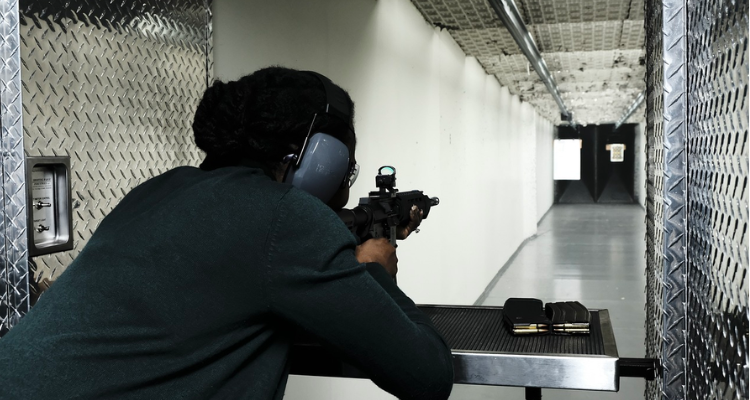From spears to longbows to rifles, people have been aiming for (and hitting) long-range targets since the dawn of humanity.
It’s no easy task though, and modern weaponry and gadgets like the best 6.5 creedmoor scope has gotten sophisticated enough that it’s even more mind boggling. The thing to remember is that shooting over long distances and hitting your target with precision is all about the setup.
That said, here are a few tips that’ll help shoot long-range with precision.
Tip #1: Prone Position
Lay your body flat on the ground, aligned with the direction of your rifle—if you need to reposition your rifle, you should reposition your body as well.
Laying with your legs at an angle from your torso rather than straight back can throw off your shot. In this position, you should be able to support the gun with your shoulder and the bipods (you can also use a backpack/bag to rest the gun on instead of bipods).
Tip #2: Line Up the Circles
Once in position, you’ll want to make sure you don’t have any tunnel effect or shadow in your scope to avoid parallax error.
Align the objective lens and the ocular lens (the front and back lenses in the scope) so that the diameter of the objective lens is slightly larger than that of the ocular lens. This is referred to as “lining up the circles.” If you don’t line up the circles, your view may be distorted, and that will affect your aim.
Tip #3: Set Your Elevation
There are two measurement systems for setting the elevation: MOA (minutes of angle) and MILS (milliradians). Both systems work well, and it is mostly a matter of personal preference.
MOA is the Imperial measurement system while MILS is Metric. Some people swear that MILS is superior to MOA, but you will probably get your best results by going with whichever measurement system you use in your everyday life. For most Americans, this will be the Imperial MOA system.
The difference in measurement is that when you are using MOA, it lines up at just a hair over an inch per one hundred yards (the exact measurement being 1.047 inches per one hundred yards), while MILS lines up at 10 centimeters per one hundred yards. In practice, most people using MOA just forget the .047 and round it as one inch.
Tip #4: Pull the Trigger Straight Back
Now that you have made your adjustments and are lined up with your target, its time to pull the trigger.
There’s no need for a death grip on the gun, but your grip should be firm enough that you can handle the recoil. Take your safety off and use the flat part of your finger to pull the trigger straight back.
Your fingernail should run parallel to the trigger—don’t use the crease of your knuckle because that can pull the trigger diagonally instead—and your thumb should be parallel with the buttstock rather wrapped around it for the same reason.
As you pull, follow through with the trigger all the way back, even after the rifle has fired, because you need to allow time for the mechanisms in the gun to finish their job and send the bullet all the way through the barrel without any jerking motion. If you are too quick to release after you fire, a slight jerk of the gun before the bullet has exited the barrel could throw off your shot.
And that’s it! Put these tips into practice and watch your accuracy skyrocket like nothing before. Oh and I almost forgot: if you live in Las Vegas, you need to check out Las Vegas firing range when you can. It’s a whole another experience.
Author Bio:
Richard Douglas is the founder of Scopes Field, a blog where he reviews various firearms and optics. He’s a strong 2nd amendment advocate and believes in science-backed gun solutions to our nation’s biggest problems



[…] Bullet trajectory: Understanding the bullet’s trajectory is crucial for accurate shots. The 22 Magnum has a flatter trajectory, allowing for better accuracy at longer distances. […]
Comments are closed.